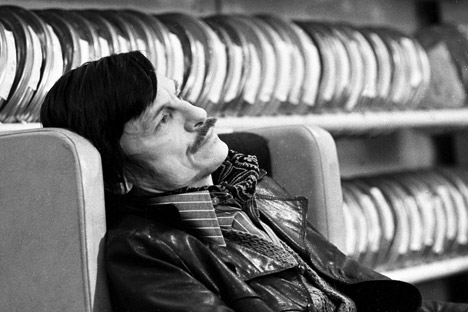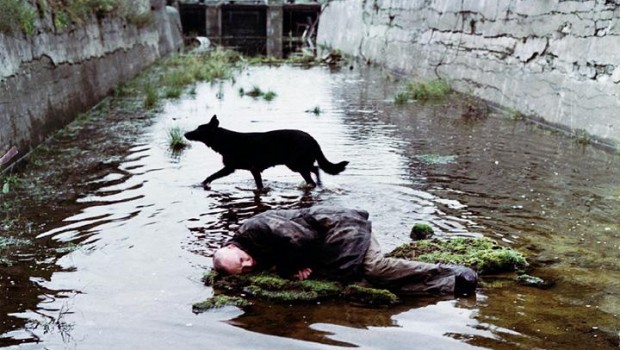
At the age of twenty-two, he joined the VGIK film school. It was a significant stage in his life for it was here that he met Irma Raush, who he wedded in 1957 and just because, watched films by notorious movie producers like Kurosawa, Bunuel, Bergman, and Bresson. Every one of these executives immensely affected his life and particularly on his true to life works. His graduation venture at VGIK, The Steamroller and the Violin (1961) earned him the most elevated conceivable differentiation, won the First Prize at the New York Student Film Festival in 1961, and denoted the start of a profession that would be consumed by the ages to come.

Tarkovsky's film is remarkable and every thought that he attempted to communicate, he did it with complete flawlessness and offered what he could to the stylish of film. His movies are not engaging and communicate in a language that is difficult to translate. His first full-length movie, Ivan's Childhood (1962) was a Soviet war show movie that put him on the guide among the extraordinary executives of the twentieth century. This film was mostly self-portraying since Tarkovsky himself suffered through the war and for him "the past was more genuine than the present". Jean-Paul Sartre cheered the 'youthful executive' for his film and Ingmar Bergman proceeded to state that "My disclosure of Tarkovsky's first film resembled a supernatural occurrence. Unexpectedly, I ended up remaining at the entryway of a room the keys of which had, up to that point, never been given to me. It was a room I had for a long while been itching to enter and where he was moving uninhibitedly and completely calm. I felt energized and invigorated: somebody was communicating what I had for a long while been itching to say without knowing how."

One needs to bear the significant progression of his bespoke considerations and even today, nobody has had the option to recreate the air gravity of his moderate-paced shots. From the marshlands of Stalker to the waterlogged houses in Nostalghia (1983), all the pictures, regardless of whether chose from the film and put independently, are life-changing. In any event, when Tarkovsky decided to coordinate Solaris (1972), a sci-fi film, he gave another importance to the class, investigating the human condition through the idea of extraterrestrial life. In Stalker (1979), another film that drapes somewhere close to existentialism and life in "The Zone", he investigated philosophical and mental topics. Like the entirety of his different movies, Stalker contains drawn-out shots and he dismissed the utilization of quick montages. He accepted that the correct pictures can communicate feelings that can't be communicated by words. Discussing the film, he composed that "Stalker should be increasingly slow toward the beginning with the goal that the watchers who strolled into an inappropriate performance center have the opportunity to leave before the principle activity begins." It wouldn't be too outrageous to even consider saying that Tarkovsky's film isn't some tea. His movies require re-seeing and returning to product times so as to completely get them. Despite the fact that their pace is moderate it doesn't require a lot of influence to return to them. He talked the most through the hushes, recollections, and dreams and anticipated that his watchers should watch, yet to feel all that he needs to appear.
In the wake of viewing and re-watching his movies commonly, unmistakably to attempt to locate outright importance in his movies is a pointless activity. His movies depend on stories that discover significance in the common pictures of four essential images — earth, fire, air, and water and he didn't put stock in vocal correspondence of thoughts through exchanges however through feelings that exuded from a solitary picture. Components were significant for Tarkovsky. Their ability to characterize our reality was maybe what inspired him to utilize them to such an extent. In The Mirror (1975), he consolidated fire and water with the straightforward development of the camera catching a consuming structure and water trickling from the roof of a house. In Nostalghia, while Domenico pours gas on himself and self-immolates, Gorkachov, the hero, battles to light a matchstick as he endeavors to cross a lake with a flame in his grasp. In Stalker, the 'direct' grasp the earth and grins as though he is never going to feel its touch again. It was through these subtleties that he passed on his thoughts. No other executive is as attached to the ground as him. Andrei Tarkovsky causes the watchers to feel as though they're watching the earth, feeling the glow of a fire, and hearing water trickling without precedent for their life.

By considering his most close to homework The Mirror, Tarkovsky demonstrated that all workmanship symbolizes oneself. Fundamentally, the film is like Bergman's Persona, Alain Resnais' Last Year at Marienbad and Chris Marker's Sans Soleil, and is laden with dreams and pictures that are blended all through. In the film, he investigated his own life and through a juxtaposition of recollections and war recordings that dove into the domains of human awareness and reality, he portrayed the real factors of Soviet Russia and WWII. Tarkovsky considered his film the "cooperative laws of music and verse" and clarifying it further in Sculpting in Time, he stated, "Never attempt to pass on your plan to the crowd — it is an unpleasant and silly errand. Give them life, and they'll discover inside themselves the way to survey and welcome it."
In any case, similar to every single incredible writer, Tarkovsky thought that it was difficult to accomplish beautiful opportunities. His work and his life were set apart by Soviet restriction and Tarkovsky went through the most recent seven years of his life in a state of banishment. He started the creation of his film The First Day in 1979, set during the reign of Peter the Great in eighteenth-century Russia. To get his film endorsed by the State Committee for Cinematography (Goskino), Tarkovsky presented a content that didn't convey the scenes which were condemning of the state's legitimate agnosticism. Subsequent to shooting practically 50% of the film, it got evident to the Goskino authorities that the first screenplay varied based on what was submitted and they requested to stop the shooting. Chafed, Tarkovsky annihilated all the recordings of the film and pledged to never work in the Soviet Union again. Hence started his outcast and it was during this time he shot his last two movies.
In 1982, Tarkovsky began taking a shot at Nostalghia in Italy. The topic of the film was commonplace of the Russian predicament: that of the craftsman abroad, enduring due to yearning to go home, and simultaneously incapable to live in his nation or away from it. Like all his different movies, Nostalghia excessively was self-portraying in nature, mirroring Tarkovsky's inward unrest. A passage in journals from Rome peruses, "25 May, A terrible day. Horrible considerations. I'm scared. I am lost! I can't live in Russia, nor would I be able to live here." Mosfilm, the biggest film studio in Soviet Russia, had pulled back from the task and had terminated him. Tarkovsky had to go to Italian studios. He finished the film in 1983 and it collected significant honors. Indeed, even in Italy, his work was gotten well. It won the Ecumenical Jury Award, the Best Director Award, and the FIPRESCI Prize. It additionally went to the Cannes Film Festival that year. In any case, even in a state of banishment, Tarkovsky experienced furious opposition from Soviet specialists. At Cannes, Sergei Bondarchuk, the leader of the Soviet assignment, effectively battled against the honor of Palme d'Or to his film. At last, Tarkovsky imparted a prize at the celebration to Robert Bresson. In a meeting, he noted, "I was perplexed, harmed, and upset. Goskino did all that they could to humiliate me before the celebration, the crowd, and the press." He likewise noticed that none of the agents from Russia came to him after the celebration had finished and left without saying anything. In a public interview in Milan in 1984, he reported that it was the ugliest snapshot of his life and proclaimed that he would stay in the West and stay away forever to Russia. Double-crossed, Tarkovsky felt distanced and invested energy in London, before at last making a trip to Sweden for his film The Sacrifice.

Tarkovsky confronted a similar destiny the same number of specialists from Russia did and the rundown incorporates individuals like Osip Mandelstam, Joseph Brodsky, and Alexander Pushkin. The restriction and opposition were commonplace to him. He'd confronted soviet control during the shooting of his subsequent film, Andrei Rublev. The film's topics included aesthetic opportunity and making craftsmanship under an abusive system. Be that as it may, Goskino didn't discharge the film for more than three years expressing that they did it due to realistic pictures, bareness, and creature remorselessness. The film which was finished in 1966 confronted significant cuts and was at last screened at Cannes Film Festival in 1969 however was designated a 4:00 AM space. After the discharge, Tarkovsky noted in his journal that there wasn't even a solitary banner of the film in the entire of Moscow, however, all the performance centers were as yet sold out. After the fulfillment of The Sacrifice, Tarkovsky was determined to have terminal lung disease. In 1985, he showed up at the Latina Refugee Camp and bore the sequential number 13225/379. His child, Andrei Jr, and his relative weren't permitted to leave Russia. It was in Paris, just weeks before his demise that he met his child. Tarkovsky took his final gasp on 29 December 1986 at 54 years old, abandoning an inheritance that is unequaled and rests at Sainte-Geneviève-des-Bois in Paris.